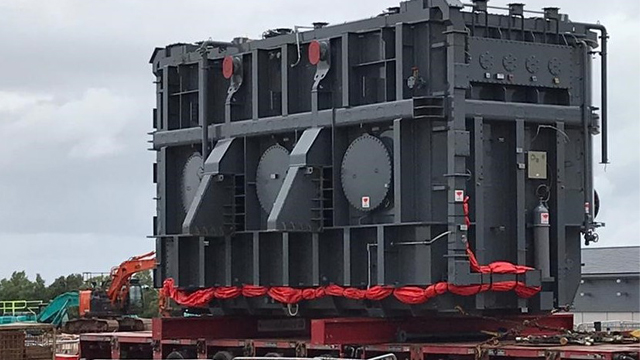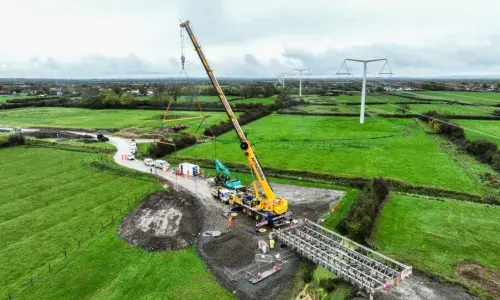
Final supergrid transformer arrives at Sandford
178-tonne load delivered smoothly via local roads
Another milestone on the Hinkley Connection Project was reached in mid-August, when National Grid took delivery of the final transformer at the new substation it's building at Sandford. The transformer, a vital piece of equipment that will change the voltage within the substation, is now being installed on site.
The transformer was built in South Korea and sailed to Portbury Docks before transferring to Dunball Wharf. Because of the size and weight of the transformer, National Grid employed a specialist transport company that liaised closely with North Somerset Council, Highways England and Avon and Somerset Police to agree the route that should be used to access the site.
After leaving Dunball Wharf, the transporter travelled at speeds of around 10 mph on a number of A roads, including the A39, A38 and A368, and a maximum of 15 mph on the M5, taking around four hours to reach Sandford substation.
The total length of the transport was 60 metres, including tractor units. It included an 18-axle girder frame trailer, with a driving cab at both the front and back to enable steering. Including all tractor units, the transporter had 26 axles. The transformer is 8.67 metres long, 5.35 metres wide and 4.75 metres high, nearly as high as a two-storey house. It weighs 178 tonnes, more than the largest mammal alive, the blue whale, which weighs on average 145 tonnes.
Project engineer Roxane Fisher said: “This was the third delivery of such a large load to our site this year and all went smoothly. In between the two transformers we received a shunt reactor and we’re now arranging our last delivery, the final shunt reactor, in September. Completing this delivery will be a major milestone in the construction of Sandford substation, as this equipment is central to how the substation works."
National Grid’s transformers change the electricity voltage within our network. They can either increase it, to travel long distances across our network of overhead lines and cables, or decrease it, so that companies such as Western Power Distribution (WPD) can safely supply electricity to our homes and businesses. Shunt reactors regulate voltage and increase the energy efficiency of the system.


